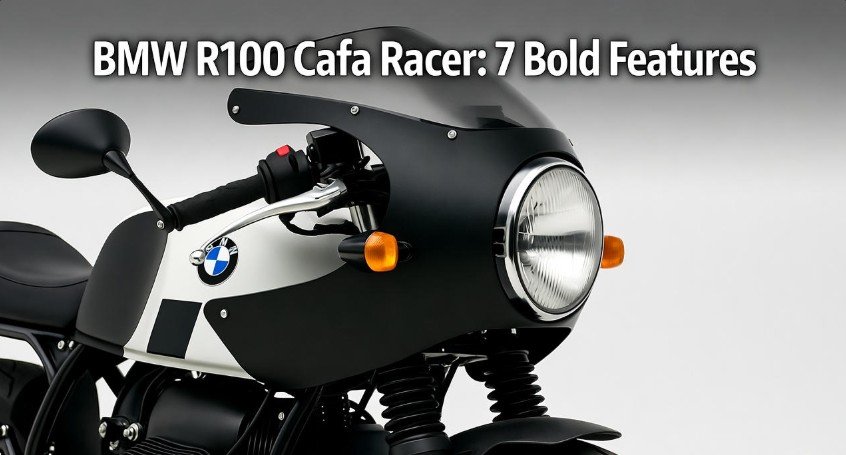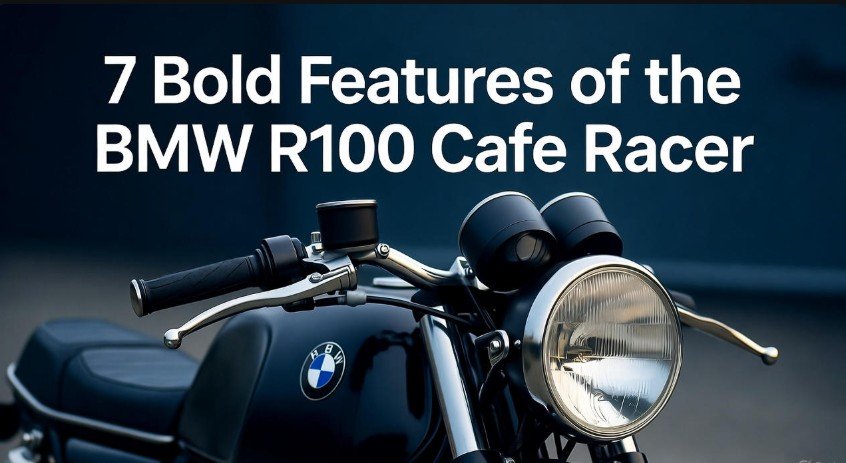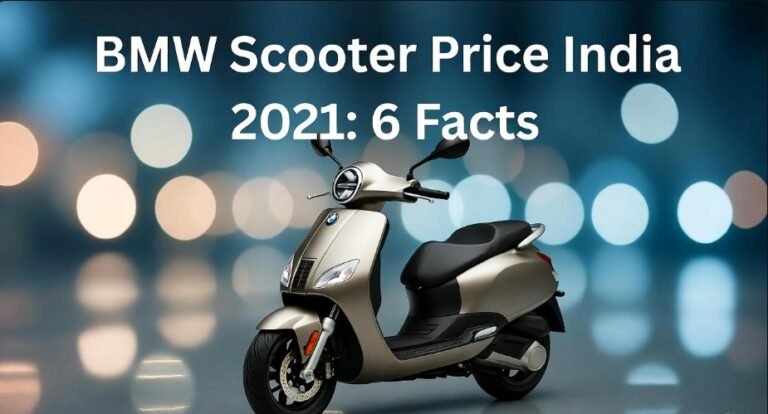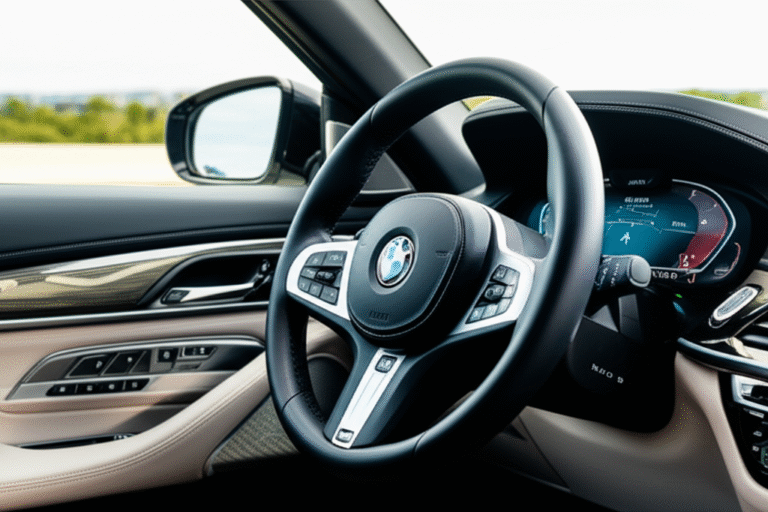BMW R100 Cafe Racer: 7 Bold Features

The BMW R100 Cafe Racer is a classic icon, and understanding its 7 bold features helps you appreciate its timeless appeal and custom potential. This guide breaks down what makes these bikes special for enthusiasts in the USA.
Key Takeaways
- Discover the iconic BMW R100 Cafe Racer.
- Explore its powerful boxer-twin engine.
- Understand its distinctive frame and suspension.
- Learn about its minimalist aesthetic.
- See custom modification insights.
- Appreciate its enduring legacy.
Have you ever seen a motorcycle that just feels right? That’s the magic of the BMW R100 Cafe Racer. It’s a machine that blends classic design with a sporty spirit. For many in the USA, this bike represents more than just transportation; it’s a statement. Building or owning one can seem daunting, but understanding its core components makes it much more approachable. We’re going to dive into the seven bold features that make the BMW R100 Cafe Racer a legendary build. Get ready to explore what makes this bike so special.
What is a BMW R100 Cafe Racer?
The BMW R100 series, produced by BMW Motorrad from 1976 to 1995, was originally designed as a versatile touring and commuting motorcycle. The “R” signified a shaft-driven boxer engine, and the “100” indicated its 1000cc displacement. These bikes were known for their reliability, comfort, and robust engineering, making them a popular choice for riders across the USA.
A “Cafe Racer” is a style of motorcycle that originated in the UK in the 1960s. It’s characterized by a stripped-down, minimalist aesthetic, designed for speed and agility. Cafe racers are typically modified from standard production bikes, with key features like clip-on handlebars, a café-style seat with a tail hump, and often a more aggressive riding position. The BMW R100, with its strong engine and sturdy frame, proved to be an excellent platform for this type of transformation. The result is a bike that’s both visually striking and a joy to ride.
7 Bold Features of the BMW R100 Cafe Racer

The appeal of the R100 Cafe Racer lies in its unique blend of engineering prowess and customizable charm. Here are seven bold features that define this iconic motorcycle transformation.
1. The Classic Airhead Boxer Engine
At the heart of every BMW R100 is its legendary “Airhead” boxer-twin engine. This horizontally opposed twin-cylinder engine is air-cooled, which means it doesn’t rely on a radiator and coolant system, simplifying maintenance. This design offers a unique character and distinctive sound. For a cafe racer build, the R100’s 980cc engine provides ample power and torque. It’s known for its smooth operation, reliability, and ability to be tuned for improved performance.
The boxer engine’s low center of gravity contributes to the bike’s stable handling. Its distinctive “pancake” shape also gives it a unique visual presence. Many enthusiasts appreciate the mechanical simplicity of the airhead, making it easier for DIY maintenance and modifications. This engine is a cornerstone of what makes the R100 a fantastic donor bike for a cafe racer project.
Engine Specifications (Typical R100)
To better understand the power unit, let’s look at some typical specifications:
| Specification | Details |
|---|---|
| Engine Type | Air-cooled, four-stroke, horizontally opposed twin cylinder |
| Displacement | 980 cc |
| Bore x Stroke | 90.0 mm x 77.6 mm |
| Compression Ratio | 8.5:1 (varies by model) |
| Fueling | Typically dual Bing carburetors |
| Max Power | Approx. 65 hp at 7,000 rpm (varies) |
| Max Torque | Approx. 75 Nm (55 lb-ft) at 5,500 rpm (varies) |
2. The Robust Double-Cradle Frame
The R100 motorcycle is built on a strong and reliable double-cradle frame. This type of frame provides excellent support for the engine and reinforces the overall chassis rigidity. For a cafe racer conversion, this sturdy foundation is crucial. It allows builders to reduce weight and modify components without compromising the bike’s structural integrity. The frame’s design also lends itself well to customization. Many builders will de-tab unnecessary brackets, reroute wiring, and sometimes even modify the subframe to achieve a cleaner, more minimalist look characteristic of cafe racers.
The double-cradle design protects the engine from road debris and impacts, which is vital for longevity. Its inherent strength means that even with significant aesthetic and functional modifications, the R100 frame remains a solid base for performance tuning and riding. When transforming an R100 into a cafe racer, the frame is often powder-coated or painted in a new color, further enhancing its visual appeal, often in conjunction with lighter bodywork.
3. The Distinctive Monolever or Twin Shock Rear Suspension
Depending on the specific R100 model and year, you’ll find either a twin-shock (older models) or a Monolever (later models, like the R100GS, though less common for cafe builds) rear suspension system. For classic cafe racer builds based on the R100, the twin-shock setup is more prevalent. These bikes typically feature robust rear shock absorbers that offer a good balance of comfort and sporty handling. The engine’s placement and the frame’s geometry work in tandem with the suspension to provide a planted feel on the road.
When converting to a cafe racer, enthusiasts often upgrade these shocks. Performance shocks can provide better damping, adjustability, and a more aggressive stance. The goal is to optimize the suspension for spirited riding, which means ensuring it can handle cornering forces effectively. Even with stock components, the R100’s suspension is well-engineered for its time and provides a capable platform for modifications. The visual impact of the twin shocks themselves can also be a desirable aesthetic for some cafe racer styles.
4. The Iconic Dual Disc Front Brakes
Safety and performance are paramount, and the BMW R100 typically features dual disc brakes on the front wheel. This setup was quite advanced for its era and provides excellent stopping power. For a cafe racer, which is often ridden more assertively, effective braking is non-negotiable. The dual discs, usually paired with well-designed calipers, offer strong, consistent performance, allowing the rider to confidently control speed in various conditions. This is a key feature that contributes to the R100’s capability as a sporty motorcycle.
Many builders will opt to upgrade the brake lines to braided stainless steel for improved feel and durability. Sometimes, more modern calipers or master cylinders are also installed to further enhance braking performance. However, even in stock form, the dual disc setup on the R100 is a significant advantage and a testament to BMW’s focus on rider safety and performance. These brakes instill confidence, allowing you to enjoy the ride.
5. The Minimalist and Stripped-Down Aesthetic
The “cafe racer” style is all about shedding excess weight and embracing a clean, purposeful look. The BMW R100 provides a perfect canvas for this. Builders often remove bulky original parts, such as large fenders, passenger footpegs, and excessive fairings. They then replace them with lighter, sleeker components. This includes custom fuel tanks, minimalistic seats (often with a “seat cowl” or tail hump), smaller headlights, and tucked-away instruments.
The aim is to create a motorcycle that looks fast even when it’s standing still. The boxer engine’s mechanical beauty is often highlighted, with intricate exhaust headers snaking out from the cylinders. The overall silhouette becomes more aggressive and focused. This stripped-down approach not only improves the bike’s aesthetics but also reduces its weight, enhancing agility and acceleration. It’s a transformation that celebrates the machine’s core essence.
6. Custom Handlebars and Riding Position
One of the most defining features of a cafe racer is its riding posture, achieved through custom handlebars. On a BMW R100 cafe racer, you’ll almost always find clip-on handlebars. These are attached directly to the fork tubes, below the top triple clamp, forcing the rider into a lower, more forward-leaning position. This posture is ideal for aerodynamic efficiency and assertively navigating corners, embodying the cafe racer spirit of spirited riding.
This riding position, while iconic, is more aggressive than the stock R100 touring setup. It requires a certain level of rider engagement and can be less comfortable for long-distance touring. However, for shorter, spirited rides, it’s intoxicating. The choice of clip-on height and width can be customized to find a balance between aggressive styling and rider comfort. You might also see different styles of handlebars, like clubman bars, which offer a slightly less extreme but still sporty riding position.
7. The Custom Exhaust System
The exhaust system on a BMW R100 cafe racer is often a significant visual and auditory upgrade. Stock R100s came with relatively mild exhausts. For a cafe racer, builders typically opt for a 2-into-1 or a 2-into-2 system that is lighter, more free-flowing, and sounds more aggressive. These systems often feature stainless steel construction and can be routed in various ways to complement the bike’s overall design, sometimes tucking up close to the frame or swinging out with a more pronounced sweep.
The sound of a well-tuned boxer engine with a performance exhaust is a significant part of the cafe racer experience. It’s a throaty, distinctive growl that announces the bike’s presence. Beyond sound, a well-designed exhaust system can also improve engine performance by reducing backpressure and allowing the engine to breathe more freely. Many builders choose exhaust systems from aftermarket specialists who understand the nuances of BMW boxer engines, ensuring both performance and a captivating sound. You can find excellent examples from brands specializing in vintage BMWs.
The Customization Potential
The BMW R100 Cafe Racer is more than just a motorcycle; it’s a platform for creativity. The inherent robustness of the BMW R100 chassis and engine makes it incredibly adaptable. Enthusiasts in places like California, Texas, and Florida, and indeed all across the USA, have embraced these bikes for their unique character and customization potential. Whether you’re looking for a vintage aesthetic with modern performance or a completely bespoke machine, the R100 delivers.
Beyond the seven features highlighted, countless other modifications can be made. This includes custom paint jobs, upgraded electrical systems, modern lighting, bespoke seating upholstery, and integrated navigation systems. The aftermarket community for vintage BMWs is thriving, offering a wide array of parts and accessories. Websites like eBay Motors, specialized forums, and custom bike builders offer inspiration and components. For those interested in the legal aspects of modifying vehicles in the USA, it’s always a good idea to check with your local Department of Motor Vehicles (DMV) regarding specific regulations on customization, noise, and emissions.
Common Modifications for R100 Cafe Racers
Here’s a look at some popular modifications seen on these builds:
- Wheels and Tires: Lighter alloy wheels and sportier tires.
- Fuel Tank: Custom-shaped tanks for a sleeker profile.
- Seat: Solo seats, often with a humped tail for aerodynamic styling.
- Electronics: Modern ignition systems, LED lighting, and smaller instrument clusters.
- Gauges: Minimalist speedometers and tachometers.
- Forks: Sometimes upgraded with more adjustable damping.
- Paint: Custom color schemes, often matte finishes or classic racing liveries.
Pro Tips:
When embarking on an R100 cafe racer build or buying one, always prioritize safety. Ensure all modifications comply with local USA traffic laws. Consider upgrading brake pads and ensuring the brake system is in excellent working order for optimal stopping power.
Why is the BMW R100 a Great Cafe Racer Candidate?
The R100 is an excellent candidate for a cafe racer conversion due to several key factors. Firstly, its air-cooled boxer engine is mechanically simple, reliable, and offers a good power-to-weight ratio once customized. The robust frame provides a strong and stable base for modifications. Furthermore, BMW’s engineering quality means these engines and frames often have a long lifespan, making them ideal for restoration and customization projects. The distinctive look of the boxer engine also adds to the visual appeal, making it a standout choice in the custom bike scene. The availability of aftermarket parts and the strong community support further enhance its suitability. For riders in the USA looking for a classic yet capable machine, the R100 fits the bill perfectly.
Frequently Asked Questions (FAQ)
What year R100 is best for a cafe racer build?
There isn’t a single “best” year, as most R100 models offer a suitable platform. However, later models (post-1980s) might feature improved electrical systems or Monolever rear suspension (though less common for cafe builds), which some builders prefer. Early R100/7 models are also popular for their classic aesthetics. It often comes down to personal preference and the specific condition of the donor bike.
Are BMW R100 cafe racers reliable?
Yes, BMW R100 cafe racers can be very reliable, provided they are built and maintained correctly. The original R100 motorcycles were known for their durability. When converted by skilled builders or maintained meticulously, the airhead engine and robust frame ensure a dependable ride. Regular maintenance, as with any motorcycle, is key to their longevity.
How much does a BMW R100 cafe racer typically cost?
The cost can vary significantly. A well-maintained, stock R100 might range from $5,000 to $10,000 USD. A professionally built custom R100 cafe racer, using high-quality parts and meticulous craftsmanship, can easily run from $15,000 to $30,000 USD or even more, depending on the complexity and exclusivity of the build. DIY builds can be cheaper, but factor in the cost of parts, tools, and your time.
Is the riding position of a cafe racer comfortable for daily use?
For many riders, the aggressive, leaned-forward riding position of a traditional cafe racer can be uncomfortable for long commutes or daily use, especially in stop-and-go city traffic. It places more weight on the wrists and back. However, some builders opt for slightly more relaxed handlebar styles (like clubman bars) or custom ergonomics to improve comfort without sacrificing the cafe racer aesthetic.
What kind of maintenance do these bikes require?
BMW R100s, especially the airhead models, require regular maintenance. This includes oil changes, valve adjustments, carburetor synchronization, and checking/lubricating the driveshaft and final drive. The simplicity of the engine means many tasks can be handled by the owner with basic tools and a service manual. For custom builds, specific components might have their own maintenance schedules.
Where can I find parts for a BMW R100 cafe racer build in the USA?
Several excellent resources exist for parts in the USA. Online marketplaces like eBay Motors are great for used and rare parts. Dedicated BMW motorcycle parts suppliers, such as Siebenrock, Euro Moto Electrics, and Boxers-Bits, offer a wide range of new and specialized components. Many custom bike builders also fabricate their own parts or offer bespoke solutions. Forums and online communities are invaluable for recommendations and finding obscure items.
Can I convert any BMW R100 model into a cafe racer?
Yes, generally any R100 model can be converted into a cafe racer. The specific model might influence the starting point and the final aesthetic. For example, an R100RS might have fairings to remove, while an R100GS has a different suspension setup. The R100RT, designed for touring, will have more components to strip down. The core engine and frame are common across the R100 line, making them all viable candidates for customization.
Conclusion
The BMW R100 Cafe Racer stands as a testament to enduring motorcycle design and the boundless possibilities of customization. Its iconic boxer engine, robust frame, and classic lines provide the perfect foundation for a machine that’s as thrilling to ride as it is beautiful to behold. Whether you’re drawn to its minimalist aesthetic, its sporty performance, or the sheer mechanical artistry, the R100 cafe racer captivates. For enthusiasts in the USA and around the globe, it represents a perfect fusion of heritage, performance, and personal expression. Understanding these seven bold features is your first step into appreciating this legendary motorcycle build.


